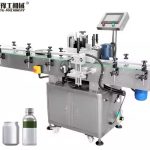Have you heard of the item “Bottle Preform”? How is bottle pet preform made? What is the bottle preform price? This blog will answer your questions.
What is a Bottle Preform?
A Botle Pet Preform is an intermediate product that is subsequently blown into a polyethylene terephthalate (PET) container. It is a test tube-shaped piece of plastic that is made by injection molding.
The materials used for preform production are PVC material, PET material, PS material, and PP material.
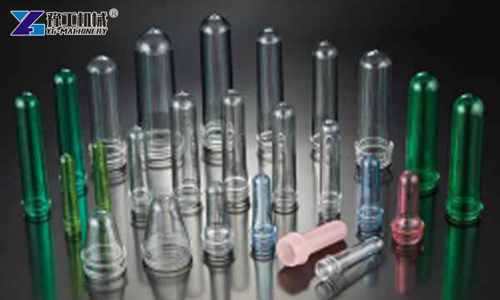
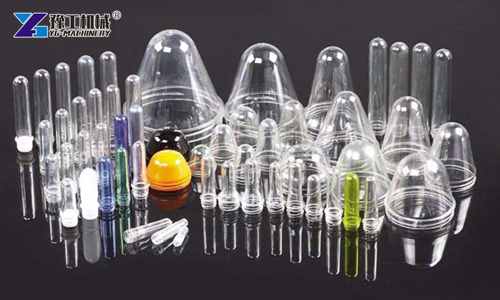
How is made bottle preform?
To make the bottle pet preform, you need a plastic injection molding machine.
A preform is made by melting down the plastic and injecting it into a mold. The mold produces a bottle preform, which is sometimes called a parison. The preform looks like a thick-walled test tube, often including the bottle’s characteristic screw top.
Principle of forming
Under certain temperature and pressure, the mold is filled with raw materials, and under the processing of the injection molding machine, it is processed into a preform with a certain thickness and height corresponding to the mold.
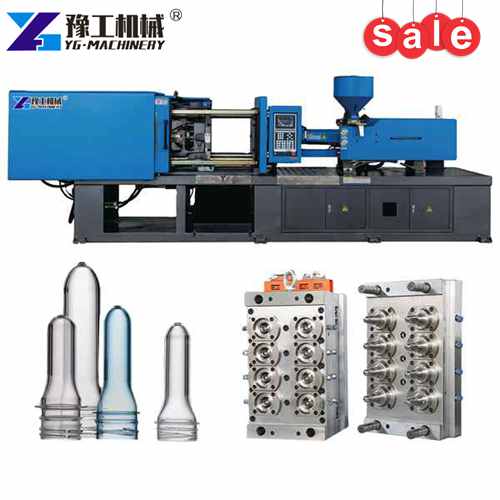
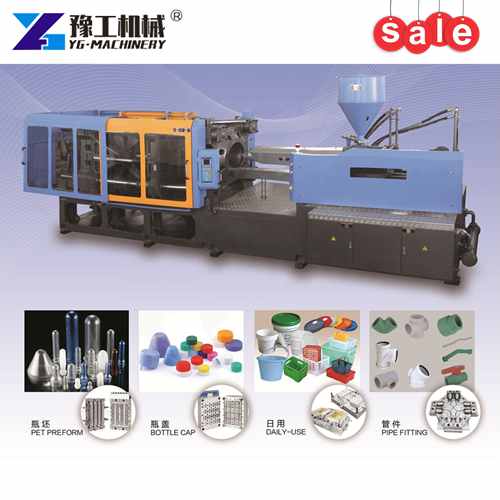
Features of PET Bottle Preform material
- PET is the main variety of thermoplastic polyester, commonly known as polyester resin.
- PET is a condensation polymer of terephthalic acid and ethylene glycol, and together with PBT, it is collectively referred to as thermoplastic polyester, or saturated polyester.
- PET is milky white or pre-yellow highly crystalline polymer with smooth and shiny surface.
- PET has good creep resistance, fatigue resistance, friction resistance and dimensional stability, low wear and high hardness, and has the greatest toughness among thermoplastics;
- PET has good electrical insulation performance and is less affected by temperature, but its corona resistance is poor.
- PET is non-toxic, weather-resistant, chemical-resistant and stable, low water absorption, and resistant to weak acids and organic solvents.
How to check the bottle preform quality?
- The end surface of the bottle mouth should be flat, without damage or notch, and the thread should be complete and smooth, without cracks, overflow or deformation, and there should be no oil stains on the inside and outside.
- The label pattern and text are clear, without misprints or missing prints, without obvious wrinkles, and the barcode can be read correctly.
- The bottom of the bottle is well formed, no depression, no protrusion, no deviation from the center point, no cracks and no delamination at the bottom of the bottle, and the mouth cannot exceed the bottom plane.
- The surface of the bottle is clean, dry, free from oil, dust, odor, and there is no impurity in the bottle.
- There is no shrinkage deformation on the mouth and body of the bottle, no flat bottle, no side wall deformation, no convex bottom, and no depression.
What is Polyethylene terephthalate (PET)?
Polyethylene terephthalate (PET) is a general-purpose linear semicrystalline thermoplastic polymer. It belongs to the polyester family of polymers. These resins are known for their excellent combination of properties. PET is recyclable and shows resistance to impact, moisture, alcohols, and solvents. It is used in fibres for clothing, containers for liquids and foods, and thermoforming for manufacturing, and in combination with glass fibre for engineering resins. PET is a polymer consisting of ethylene glycol and terephthalic acid, two materials that are combined to create hard plastic pellets. Those pellets can then be melted and shaped into nearly any form, which will then cool and harden into a tough, shatter-proof material. In its natural state, PET is highly flexible, colorless, and semi-crystalline.
Which bottles can be made from PET preforms?
Polyester preforms are reprocessed by blow molding to form plastic bottles, including bottles for packaging cosmetics, medicines, health care, beverages, mineral water, reagents, juice, soda, sports drinks, beer, and more.
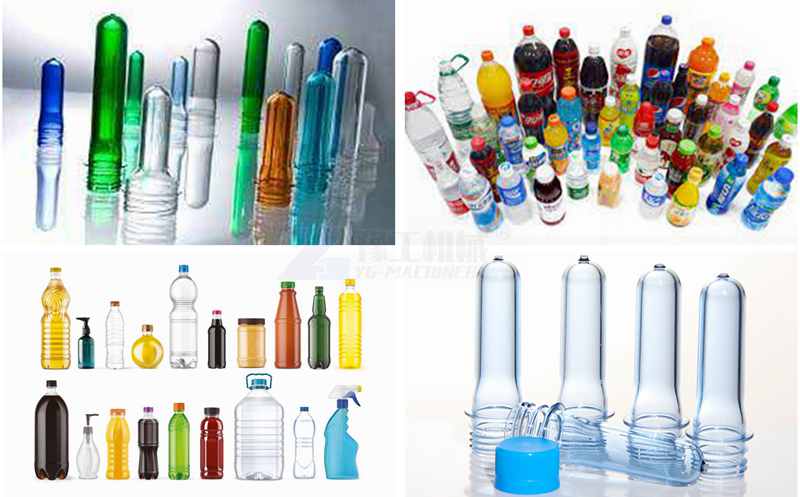
How much is PET bottle preform?
The price of PET bottle preform varies depending on the manufacturer and the quantity ordered.
In general, the price is US$ 0.01-0.03 / Piece.
Process of making plastic bottles
The process of making plastic bottles involves several stages. Plastic bottle manufacturers generally use one of four types of plastic to create bottles. Typically, the plastic bottles used to hold potable water and other drinks are made from polyethylene terephthalate (PET), because the material is both strong and light. Polyethylene (PE) in its high-density form is used for making rigid plastic bottles such as detergent bottles and in its low-density form for making squeeze bottles. Polypropylene (PP) is used for pill bottles and the like. Polycarbonate (PC) is suitable for refillable water bottles and similar reusable containers.
The process of making a plastic bottle involves several steps:
- Plastic pellets are fed into a hopper.
- The pellets are dyed with colored ink.
- The colorful pellets are pushed through a heated tube, which melts them down.
- This melted goo is injected into molds.
- The plastic goes through one more round of molding.
- The plastic is reheated so it’s flexible.
PET Bottle Blowing Machine
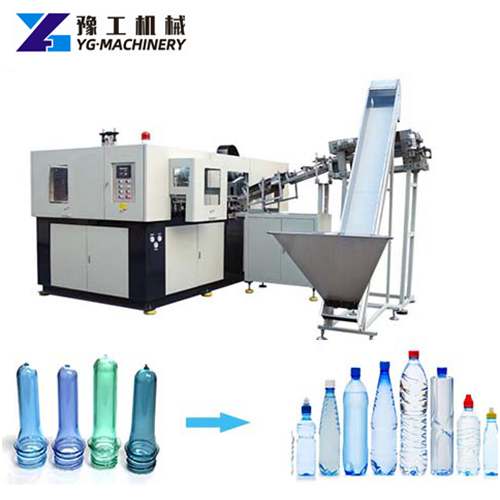
Bottle blowing machines are an essential part of the plastic bottle manufacturing process. They allow manufacturers to produce large quantities of bottles quickly and efficiently. YG Machinery provides High quality plastic bottle blowing machine to produce small bottles, fully aumatic bottle making machine for large bottles.
Call us at 008613598866720 to request a free quote.
In conclusion
Above are all questions about the bottle preform. I hope this helps! If you have any other questions about the preform, please leave your messages below. And we will update this blog.

